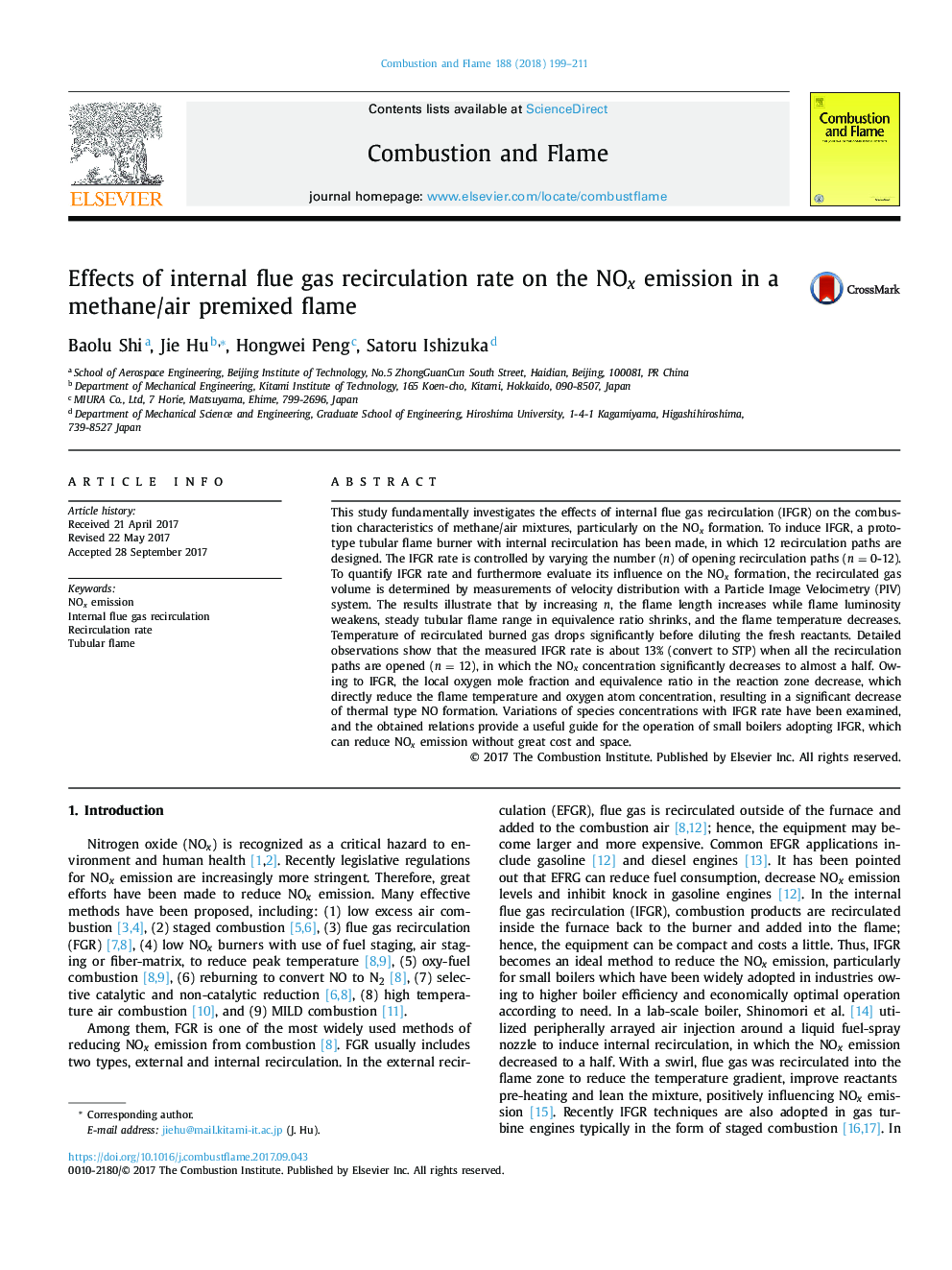| Article ID | Journal | Published Year | Pages | File Type |
|---|---|---|---|---|
| 6593950 | Combustion and Flame | 2018 | 13 Pages |
Abstract
This study fundamentally investigates the effects of internal flue gas recirculation (IFGR) on the combustion characteristics of methane/air mixtures, particularly on the NOx formation. To induce IFGR, a prototype tubular flame burner with internal recirculation has been made, in which 12 recirculation paths are designed. The IFGR rate is controlled by varying the number (n) of opening recirculation paths (n = 0-12). To quantify IFGR rate and furthermore evaluate its influence on the NOx formation, the recirculated gas volume is determined by measurements of velocity distribution with a Particle Image Velocimetry (PIV) system. The results illustrate that by increasing n, the flame length increases while flame luminosity weakens, steady tubular flame range in equivalence ratio shrinks, and the flame temperature decreases. Temperature of recirculated burned gas drops significantly before diluting the fresh reactants. Detailed observations show that the measured IFGR rate is about 13% (convert to STP) when all the recirculation paths are opened (n = 12), in which the NOx concentration significantly decreases to almost a half. Owing to IFGR, the local oxygen mole fraction and equivalence ratio in the reaction zone decrease, which directly reduce the flame temperature and oxygen atom concentration, resulting in a significant decrease of thermal type NO formation. Variations of species concentrations with IFGR rate have been examined, and the obtained relations provide a useful guide for the operation of small boilers adopting IFGR, which can reduce NOx emission without great cost and space.
Related Topics
Physical Sciences and Engineering
Chemical Engineering
Chemical Engineering (General)
Authors
Shi Baolu, Hu Jie, Peng Hongwei, Ishizuka Satoru,
